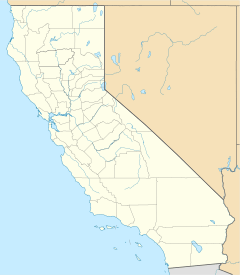Lookout City, California facts for kids
Quick facts for kids
Lookout City
|
|
|---|---|
| Country | United States |
| State | California |
| County | Inyo County |
| Elevation | 3,579 ft (1,091 m) |
Lookout City was once a busy settlement in the Mojave Desert. It was located in Inyo County, California. This former town sat high up at 3,579 feet (1,091 meters) above sea level. Today, it is known as a ghost town.
Contents
The Story of Lookout City
Imagine a time when people rushed to find valuable metals! In 1875, a lot of silver and lead ore was found. This discovery happened in the Argus Range on top of Lookout Mountain. This special find was named the Modoc.
The Modoc Mine and Its Owners
The Modoc discovery was sold to a group of investors. One important investor was George Hearst. He was a famous mining expert and a U.S. Senator. He was also the father of William Randolph Hearst, who became a well-known newspaper publisher.
The Modoc Consolidated Mining Company was started. The Modoc mine was its main project. Other mines were found nearby, like the Minnietta Belle. These mines helped create the Modoc District. The town of Lookout City was built right on top of Lookout Mountain.
Life in Lookout City
The town of Lookout City had two general stores. It also had three saloons. There were company offices and about 30 other buildings. These buildings were made of wood and stone.
By 1876, the town was very active. Two large furnaces were running. These furnaces could process 60 tons of ore each. There was also a 10-stamp mill. A stamp mill crushes rocks to get the valuable metal out.
Mining Production and Transport
Production was very high. They made about 160 bars of silver and lead every day! Each bar weighed around 90 pounds. Each bar was worth about $400.
By the end of 1876, a company called Remi Nadeau's Cerro Gordo Freighting Company was busy. They had moved 10,000 bars of metal. These were worth about $4,000,000! They used the Bullion Trail, which was first built for ore from the Cerro Gordo Mines.
Remi Nadeau needed a faster way to move the metals. So, he built a new road. It was called the Nadeau "Shotgun" road. This road went across the Panamint Valley and over the Slate Range. It connected with the Bullion Trail south of China Lake.
Supplying the Furnaces
To keep the furnaces working, they needed charcoal. Charcoal is a type of fuel. Ten charcoal kilns were built in Wildrose Canyon. This canyon was about 25 miles away in the Panamint Range.
A steady stream of donkeys carried charcoal in sacks. They brought it to Lookout City. They used a special pack trail on the east side of Lookout Mountain. The U.S. Bureau of Mines reported on the total production. From 1875 to 1890, the Modoc Mine alone produced $1,900,000 worth of metal.


